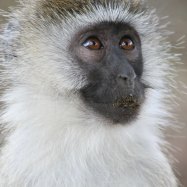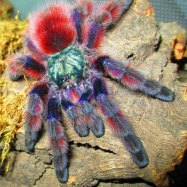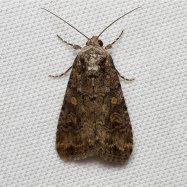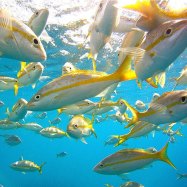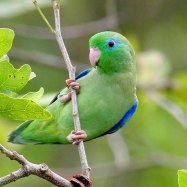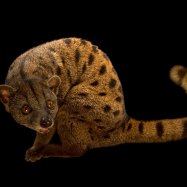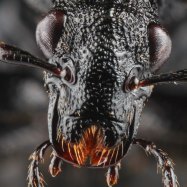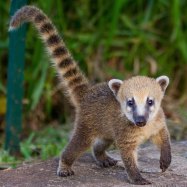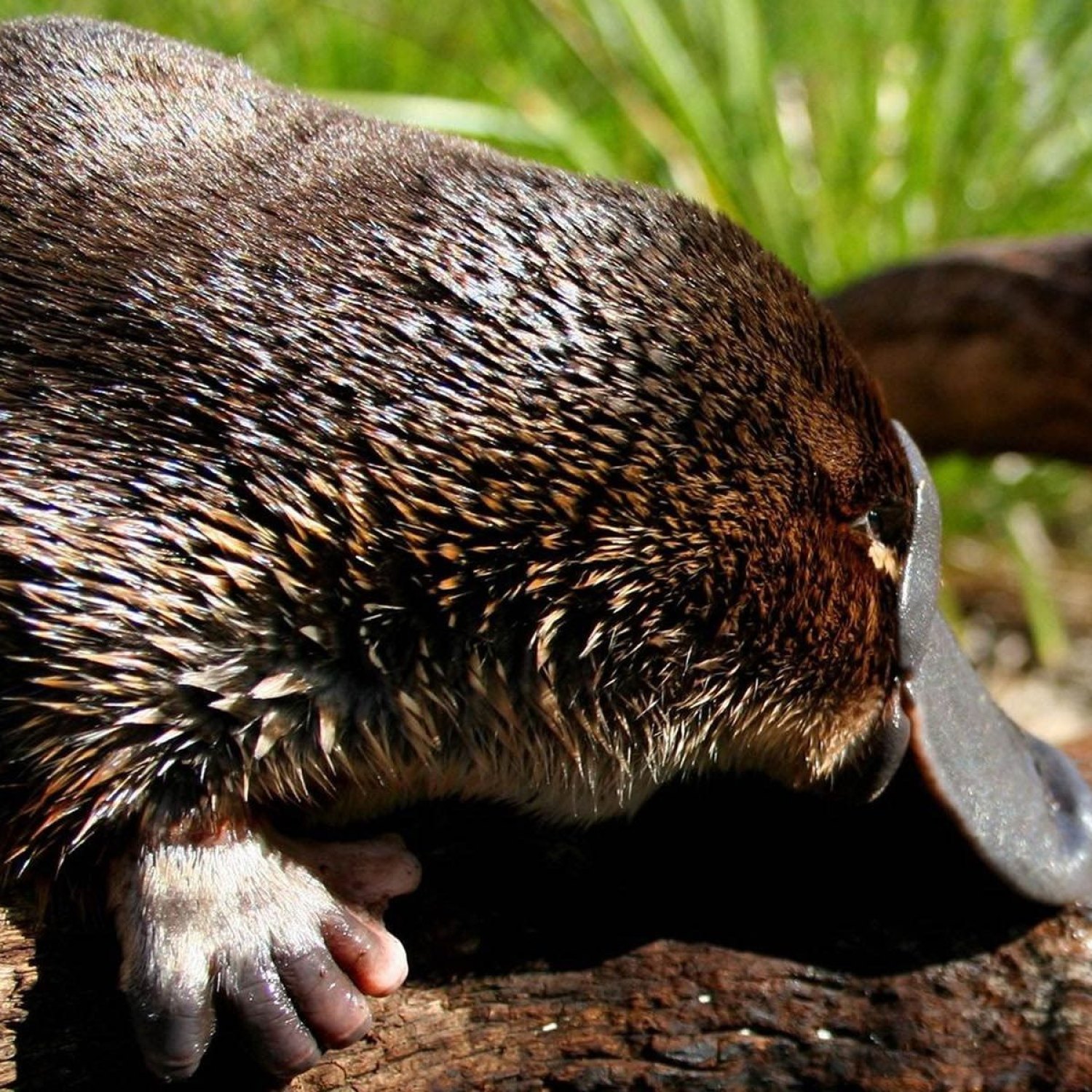
Platypus
40 to 60 centimeters
Meet the elusive Platypus 🦆, a fascinating creature found in Eastern Australia and Tasmania. With a body shaped like a streamlined torpedo and measuring 40 to 60cm in length, this unique creature belongs to the family Ornithorhynchidae. Despite its cute appearance, the Platypus is a formidable hunter, using its electro-sensitive bill to find prey in the water. Truly a marvel of nature! #Platypus #AustralianAnimals #FascinatingFacts
Animal Details Summary:
Common Name: Platypus
Kingdom: Animalia
Habitat: Rivers, streams, and lakes
The Unique and Fascinating Platypus: The Mammal Like No Other
Deep in the rivers, streams, and lakes of Eastern Australia and Tasmania, lives a creature that seems to blur the line between reality and fantasy. With a duck's bill, a beaver's tail, and otter-like feet, the platypus has been described as the world's most unusual mammal. Its scientific name, Ornithorhynchus anatinus, loosely translates to "duck-like bird snout." But don't let its comical appearance fool you; this semi-aquatic mammal is a true wonder of nature Platypus. In this article, we will explore the unique and fascinating world of the platypus, from its physical traits to its quirky behaviors.Evolutionary Anomaly: A Mammal Like No Other
The platypus, also known as the Ornithorhynchus anatinus, is a semi-aquatic mammal that belongs to the Monotremata order, meaning it lays eggs instead of giving birth to live young. It is the only surviving species of its family, Ornithorhynchidae, making it a truly remarkable evolutionary anomaly.The first Europeans to discover the platypus in the late 18th century were initially baffled by its appearance and thought it was some kind of hoax. Its discovery caused a sensation, and scientists and naturalists were eager to study this unusual creature. However, even with modern technology, the platypus continues to surprise and intrigue researchers.
A Unique Blend of Physical Features
One of the most distinctive features of the platypus is its bill, which is shaped like a duck's and is used for hunting prey in the water. The bill is covered in soft, sensory-filled skin that is highly sensitive to touch, making it an essential tool for navigating through murky waters.But that's not all; the platypus also has a beaver-like tail, which helps it to swim and store fat reserves Pine Marten. The tail is covered in fur and acts as a rudder and stabilizer, allowing the platypus to maneuver through the water with ease.
The platypus's feet are also worth mentioning, as they are a unique blend of features from various animals. Its webbed, otter-like feet enable it to paddle efficiently in the water, while its sharp claws and sensitive pads allow it to grip and dig on land. These adaptations make the platypus a formidable hunter, capable of chasing after its prey on land and underwater.
Streamlined Body and Dark Brown Coloration
The platypus has a small and streamlined body, measuring 40 to 60 centimeters in length and weighing 1.5 to 2.4 kilograms. Its streamlined shape allows it to swim effortlessly and quickly through the water, making it an excellent hunter.The platypus's fur is also worth mentioning, as it is a crucial adaptation for its semi-aquatic lifestyle. The fur is two layers thick, with a dense, waterproof inner layer and a longer outer layer that traps air, providing insulation. This insulation is especially important since the platypus does not have a layer of body fat to keep it warm in the cold waters of its habitat.
The platypus's body is mostly dark brown, with lighter underparts. This coloration helps it to blend in and stay hidden in the murky waters of its habitat, making it easier to hunt and avoid predators.
A Carnivorous Diet
Despite its cute appearance, the platypus is a carnivorous predator, mainly feasting on aquatic invertebrates such as shrimp, worms, and insect larvae. Its unique bill helps it to detect prey in the water by sensing electrical fields. Alongside its bill, the platypus has numerous small, sharp teeth that are designed for holding onto slippery prey.The platypus has also been observed using its sensitive bill to scoop up small stones from the riverbed, which it then stores in pouches in its cheeks. Scientists believe that these stones act as a makeshift tool to break open the hard shells of its prey. These clever feeding strategies are just another testament to the uniqueness and adaptability of this extraordinary creature.
The Importance of Rivers, Streams, and Lakes
The platypus is a semi-aquatic animal, and as such, its habitat is essential for its survival. They are found in rivers, streams, and lakes, which provide them with their primary food sources and shelter. These habitats also offer the platypus protection from predators such as foxes and dogs, which cannot easily enter the water.Unfortunately, human activities such as dam construction and pollution have had a significant impact on the platypus population. The destruction and degradation of their habitats have threatened their survival, making them a vulnerable species. Conservation efforts are being made to protect the platypus, but more needs to be done to preserve these unique creatures for future generations to marvel at.
Fun Facts about the Platypus
- The platypus is one of the few venomous mammals in the world. Males have a spur on their hind feet that contains venom, which is used for self-defense during the breeding season.- Plato, the famous Greek philosopher, is said to have named the platypus. He believed that the creature was a combination of a duck and a beaver.
- The platypus is one of only five species of mammal that lay eggs, the others being the four species of echidna.
- Platypuses are excellent swimmers and can hold their breath for up to two minutes while hunting underwater.
- A group of platypuses is called a paddle, a plunge or a puddle.
Platypus Endangerment and Conservation Efforts
As mentioned earlier, the platypus population is declining primarily due to the destruction and degradation of their habitats. Dam construction, water pollution, and land clearing have all had a significant impact on their numbers. Climate change is also becoming a threat, as it affects the availability of their food sources.To address this issue, various conservation efforts are being made to protect the platypus. One such effort is the construction of artificial platypus burrows, designed to mimic natural burrows along the riverbanks. These burrows provide safe and secure nesting sites for platypuses, ensuring their young have a better chance of survival.
Conservationists are also working to raise awareness about the importance of preserving the platypus's habitat and reducing pollution in the waterways. Educational campaigns and community involvement initiatives are helping to educate people on how they can help protect these treasured creatures.
The Platypus: A True Wonder of Nature
In conclusion, the platypus is undoubtedly a unique and fascinating creature, unlike any other mammal on the planet. Its combination of physical features, hunting tactics, and living habits make it a true wonder of nature. However, as our world continues to develop and change, it is crucial to remember the impact our actions have on these incredible creatures and take steps to protect and preserve their habitat for future generations to enjoy. Next time you see a picture of a platypus or catch a glimpse of one in the wild, take a moment to appreciate the wonder and magic of this extraordinary mammal.

Platypus
Animal Details Platypus - Scientific Name: Ornithorhynchus anatinus
- Category: Animals P
- Scientific Name: Ornithorhynchus anatinus
- Common Name: Platypus
- Kingdom: Animalia
- Phylum: Chordata
- Class: Mammalia
- Order: Monotremata
- Family: Ornithorhynchidae
- Habitat: Rivers, streams, and lakes
- Feeding Method: Carnivorous
- Geographical Distribution: Eastern Australia and Tasmania
- Country of Origin: Australia
- Location: Eastern Australia and Tasmania
- Animal Coloration: Dark brown with lighter underparts
- Body Shape: Small and streamlined
- Length: 40 to 60 centimeters
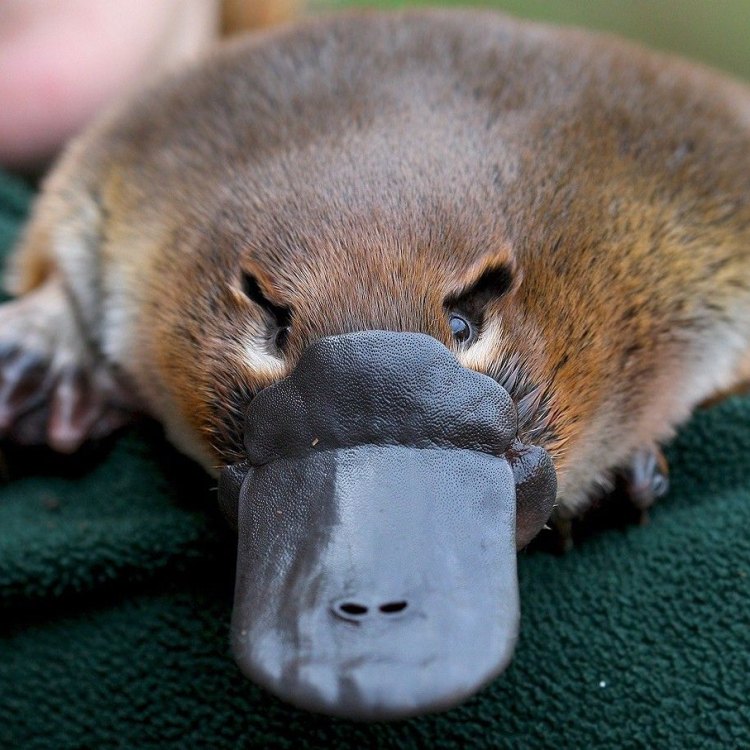
Platypus
- Adult Size: 40 to 60 centimeters
- Average Lifespan: 10 to 17 years
- Reproduction: Egg-laying
- Reproductive Behavior: Monogamous
- Sound or Call: Low growls and grunts
- Migration Pattern: No regular migration pattern
- Social Groups: Solitary
- Behavior: Semi-aquatic and nocturnal
- Threats: Habitat loss, pollution, and climate change
- Conservation Status: Near Threatened
- Impact on Ecosystem: Important indicator species for freshwater ecosystems
- Human Use: Tourism and scientific research
- Distinctive Features: Duck-like bill and webbed feet
- Interesting Facts: One of the few mammals that lays eggs. Males have venomous spurs on their hind legs.
- Predator: Fish, snakes, and birds of prey
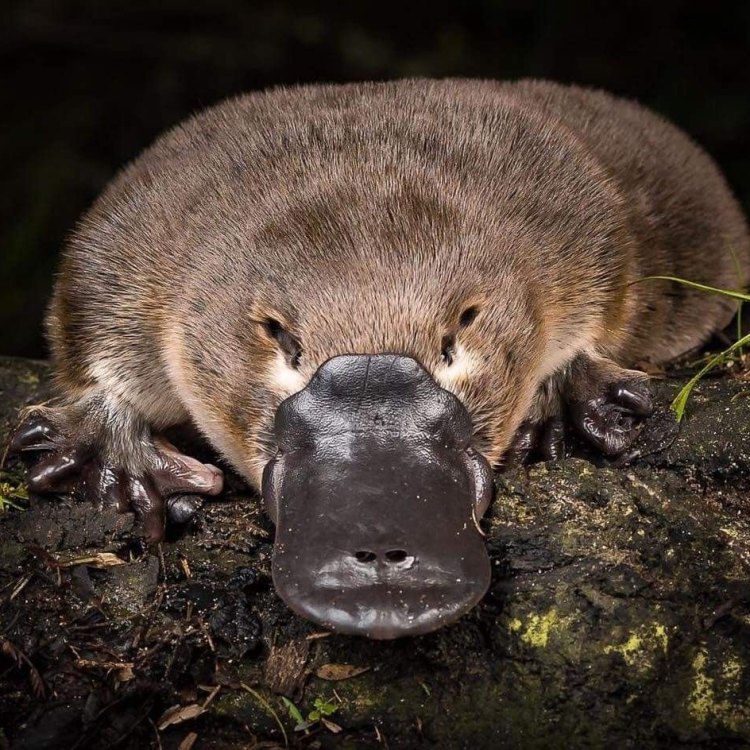
Ornithorhynchus anatinus
The Enigmatic Platypus: A Unique and Mysterious Creature
The animal kingdom is filled with countless fascinating creatures, each with its own distinctive features and behaviors. From the colorful peacock to the majestic lion, every species has its place in the diverse and complex web of ecosystems on our planet.However, there is one creature that stands out in its uniqueness and mystery – the platypus. With its duck-like bill, webbed feet, and ability to lay eggs, the platypus has captured the curiosity and imagination of humans for centuries PeaceOfAnimals.Com. In this article, we will dive into the world of the peculiar platypus and explore its fascinating features, behavior, and impact on our ecosystem.
The platypus (Ornithorhynchus anatinus) is a semi-aquatic mammal native to eastern Australia, known for its unusual appearance and behavior. It is one of the few mammals that lays eggs, making it a rare and intriguing species.
One of the most distinctive features of the platypus is its appearance. It has a stocky body, measuring between 40 to 60 centimeters in length, covered in a thick layer of waterproof fur. Its bill resembles that of a duck, which it uses to locate and capture its prey in the water. Its webbed feet are perfect for swimming, and its flat tail serves as a rudder, helping it to maneuver through the water with ease.
On average, a platypus can live for 10 to 17 years in the wild, making them relatively long-lived for their size. They are predominantly solitary creatures, with the exception of breeding season when males and females come together to mate Pudelpointer. They are also highly territorial, marking their territory with a unique scent produced by their anal glands.
Interestingly, platypuses are monogamous, which means they have one lifetime mating partner. This behavior is quite rare among mammals, making platypuses even more intriguing. After mating, the female builds a burrow, usually in a river bank, and lays a clutch of one to three eggs. She then incubates the eggs for 10 to 12 days until they hatch.
During the incubation period, the female keeps the eggs warm by curling around them and using her tail to create a warm and humid environment. Once the eggs hatch, the young platypuses (called puggles) are fed on milk produced by the mother's mammary glands, just like other mammals. However, unlike other mammals, the platypus does not have nipples. Instead, the milk is secreted through special pores on the mother's skin, and the puggles suck it up from her belly.
Despite their unique reproductive behavior, platypuses face many threats in the wild. Habitat loss due to human activities, such as dam construction and land clearing, is one of the main factors contributing to their decline. Pollution, particularly water pollution, also has a significant impact on their health and survival. In addition, climate change is altering the water temperature and flow of rivers, disrupting the natural habitat of the platypus.
Due to these threats, the International Union for Conservation of Nature (IUCN) has listed the platypus as 'Near Threatened' on its Red List of Threatened Species. This classification means that the species is at risk of becoming endangered if conservation efforts are not implemented.
Aside from their role in the ecosystem, the platypus also has significant importance for humans. Its unique features and behavior make it a popular tourist attraction in Australia. People from all over the world visit platypus habitats to catch a glimpse of these elusive creatures. Additionally, scientists and researchers are interested in studying the platypus to understand its evolution and adaptations.
One of the most intriguing facts about the platypus is that males have venomous spurs on their hind legs. Although not lethal to humans, the venom can cause intense pain and swelling. It is believed that the platypus uses its venom to defend itself against predators and during mating competitions.
Speaking of predators, the platypus has its fair share of natural enemies. Fish, snakes, and birds of prey, such as eagles, are the main predators of the platypus. However, humans also pose a threat due to habitat destruction, pollution, and accidental trapping in fishing gear.
Despite all the challenges that the platypus faces, it plays a significant role in maintaining the health and balance of freshwater ecosystems. As a semi-aquatic mammal, the platypus relies on clean and healthy rivers and streams to survive. Therefore, their presence or absence can be an important indicator of the overall health of the freshwater environment. Their diet, which consists mostly of aquatic insects, also helps to control insect populations, preventing outbreaks and promoting biodiversity.
In conclusion, the platypus is a truly remarkable creature, filled with mystery and uniqueness. Its rare reproductive behavior, distinctive features, and iconic status make it a fascinating subject for study and observation. However, as humans, it is our responsibility to ensure the survival of this enigmatic species by protecting its habitat, reducing pollution, and practicing responsible tourism. Only then can we continue to enjoy the presence of the platypus and appreciate its vital role in our ecosystem.
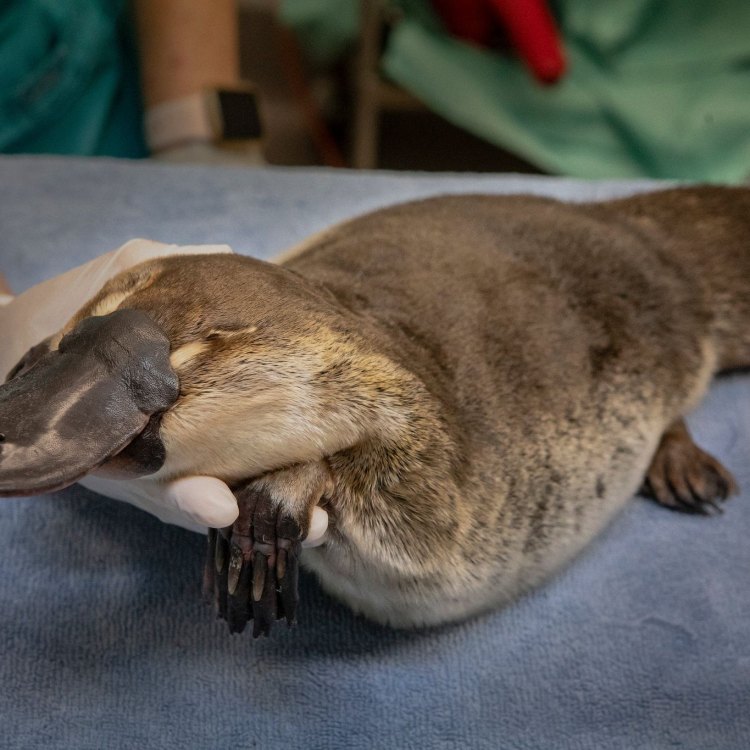
The Unique and Fascinating Platypus: The Mammal Like No Other
Disclaimer: The content provided is for informational purposes only. We cannot guarantee the accuracy of the information on this page 100%. All information provided here may change without prior notice.


